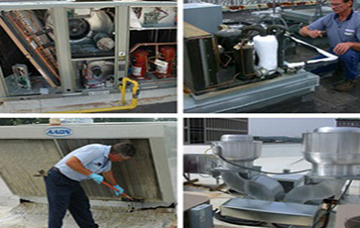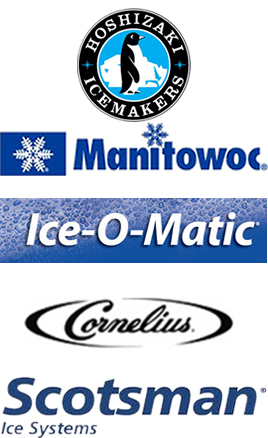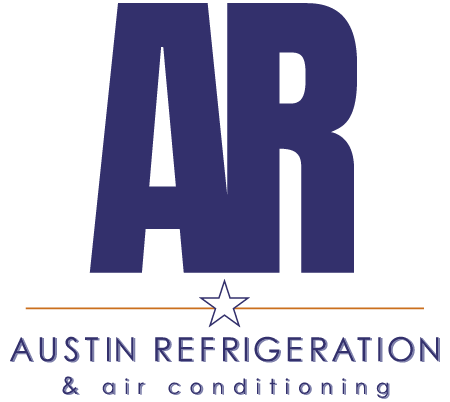




Restaurant Preventative Maintenance
Austin - Austin Refrigeration
Think of routine maintenance as an iceberg: ten percent of an iceberg is above the waterline, and ninety percent is submerged, invisible to the eye. You can’t see the part below the surface, but it nonetheless makes a world of difference if you are navigating the North Atlantic.
Routine maintenance is similar: you can’t see it, but it makes a huge difference when performed correctly. So, in these stormy economic seas, chart a new course by partnering with a knowledgeable service provider to craft a successful maintenance program for your commercial refrigeration/HVAC systems.
Is Restaurant Preventative Maintenance in your Budget?
Every business should have a line item in its annual budget for regular periodic maintenance of its HVAC equipment. Why is it important? What would happen if we did not perform, or even reduce the amount of scheduled maintenance? The easy answer is that periodic maintenance is the least expensive way to maintain your HVAC equipment. Regularly scheduled maintenance, performed by a properly trained service technician, provides many benefits.
- Coil cleaning helps maintain the required heat transferability of the system. This enables the compressors, fan motors, and valves to work at their highest efficiency.
- Quarterly filter changes help keep the indoor coil surfaces clean, maintaining efficiency and prolonging the life of the unit. Annual blower belt changes reduce the probability of nuisance service calls and unnecessary downtime.
- Scheduled inspections of the safety and operating controls and electrical components ensure your equipment is functioning according to the manufacturer's specifications. Finding irregularities before they cause a significant system failure saves you time and money and keeps the building occupants happy and comfortable. Proper maintenance will reduce the number of annual service calls on your HVAC equipment. It will also result in fewer system failures and a longer life for the equipment, avoiding expensive capital outlay to replace it.
Your investment in regular maintenance will pay for itself and produce a significant return regarding risk mitigation and asset protection. Ultimately, the preponderance of the return comes from increasing the useful life of the equipment: the longer the capital expense can be delayed, the higher the return.
HVAC maintenance also delivers some benefits that may not be easily measured on a balance sheet. With equipment running at peak performance and the number of service calls minimized, business owners and managers will realize greater peace of mind knowing the commercial refrigeration systems are well maintained.
Austin Commercial Refrigeration/HVAC Maintenance Agreement
Protect your equipment and reduce your operating costs with a Austin Refrigeration Service Agreement. Call now to discuss how we can provide you with the best possible preventive maintenance program based on your facility's needs.
What guidelines should your Atlanta HVAC service provider be using?
What key performance indicators should every commercial business owner be using?
Organizations such as the American Society of Heating, Refrigeration and Air Conditioning Engineers (ASHRAE) and the Air Conditioning Contractors of America (ACCA) developed guidelines for standard practices for inspection and maintenance services in commercial buildings. These standard practices provide building owners and managers with benchmarks for implementing a comprehensive routine hvac maintenance program. They offer a knowledgeable, external validation of the steps you and your service provider should be taking in developing your maintenance program.
HVAC Maintenance - EPA Turns Up the Heat on Refrigerant Regulation
Special thanks to my colleague, Brian C. Freeman, for this post. Brian is an attorney in our Environmental & Utilities group with a particular focus on air quality.
Refrigeration and cooling systems face expanded and tighter regulation under a final rule recently signed by EPA Administrator Gina McCarthy. The rule revises and expands EPA’s regulations for “Ozone-Depleting Substances” (ODS), which erode the stratospheric ozone layer that protects the Earth from harmful ultraviolet radiation.
Most ODS are used as refrigerants in industrial process refrigeration (e.g., in chemical, electronics, and food manufacturing), commercial refrigeration (e.g., supermarkets, refrigerated storage, and transport), or comfort-cooling/air conditioning systems. Since the 1990s, the ODS regulations (40 CFR Part 82) have mandated various practices to minimize or prevent the release of refrigerants during operation, maintenance, and disposal of refrigerant-containing equipment, and to maximize refrigerant recapture and recycling. The regulations also require certification of technicians working with ODS systems, and subject to certain exemptions, restrict ODS sales to certified technicians.
But here’s the tricky part: not only does the recently revised rule expand and tighten these requirements for ODS, it also extends them to non-ODS refrigerants used as substitutes for ODS. This extension is based not on the protection of the ozone layer, but on preventing global warming caused by such substitutes. The extension primarily targets hydrofluorocarbons (HFCs), a family of non-ODS refrigerants that have been widely used to replace ODS but have since been found to have significant global warming potential.1
In addition to extending the ODS regulations to non-ODS refrigerants, the recent revisions also include the following:
- Lowered thresholds for leak repair requirements: Under the existing regulations, the owner or operator of a refrigeration and air conditioning system that contains at least 50 pounds of refrigerant must repair and test the system or retire it when it is found to have leaked beyond certain annualized rates. Here are the existing and revised leak rates thresholds:
| Type of equipment | Under existing regulations | Under revised regulations |
| Industrial process refrigeration | 35% | 30% |
| Commercial refrigeration | 35% | 20% |
| Comfort cooling | 15% | 10% |
- New requirements for leak inspections or automatic detection monitors: Cooling systems that have exceeded the leak rates specified above must now be inspected either quarterly (for industrial process refrigeration and commercial refrigeration systems with a full charge of at least 500 pounds) or annually (for such systems with a full charge of at least 50 pounds but less than 500 pounds, and for comfort cooling systems). These inspection requirements can be avoided by continuously monitoring the system with an automatic leak detector that is audited or calibrated annually.
- Release reporting for elevated release levels: If a system with a full charge of at least 50 pounds of refrigerant has leaked 125% or more of the full charge in a calendar year, the owner or operator must submit a report to EPA. The report must describe efforts to identify the leaks and repair the equipment.
- Recordkeeping for refrigerant recovery: Technicians must now keep a record of refrigerant recovered during disposal of refrigerant and cooling systems with a full charge of 5-50 pounds. (This closes a gap in the existing regulations, which had not required such recordkeeping for this size category.)
- Updated and expanded certification requirements for refrigeration technicians.
The revisions also make extensive organizational and wording changes intended to improve readability.
The rule revisions have not yet been published in the Federal Register, but are scheduled to take effect January 1, 2017. Compliance deadlines for the various new requirements range from January 1, 2017 to January 1, 2019. In the meantime, court challenges to the rule – and particularly EPA’s authority for expanding the rule to non-ODS – seem likely.
[hubspot type=form portal=21267441 id=adb4d44e-50eb-4c36-ab3f-b889427b3e30]

"One of the Best Refrigeration Repair Companies I have ever worked with"
~ Bo Bryan
Address
Austin, TX
Business Hours
Monday-Sunday:
24 Hours a Day
7 Days a Week!
Phone
Austin Office:
(512) 764-1982
COPYRIGHT© 2016. ALL RIGHTS RESERVED -Austin Refrigeration. Restaurant Preventive Maintenance Austin, TX
